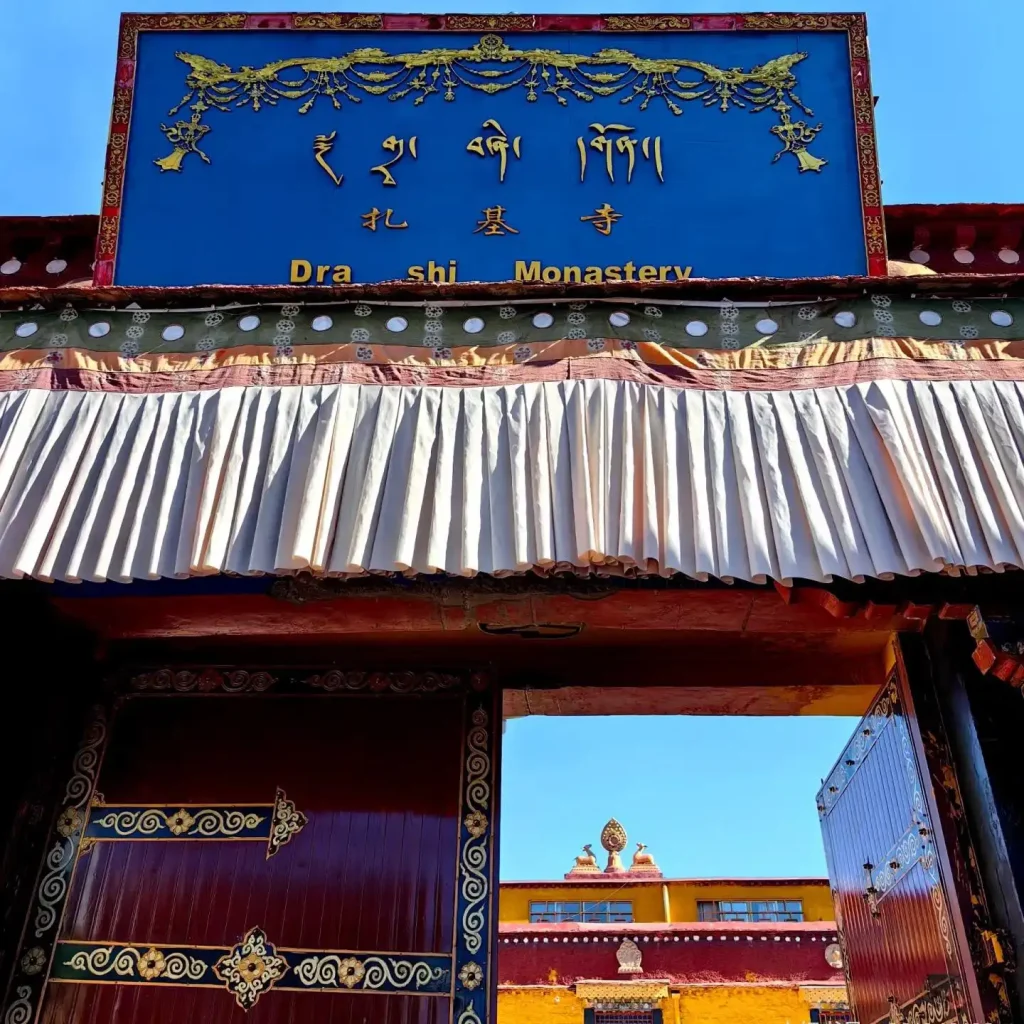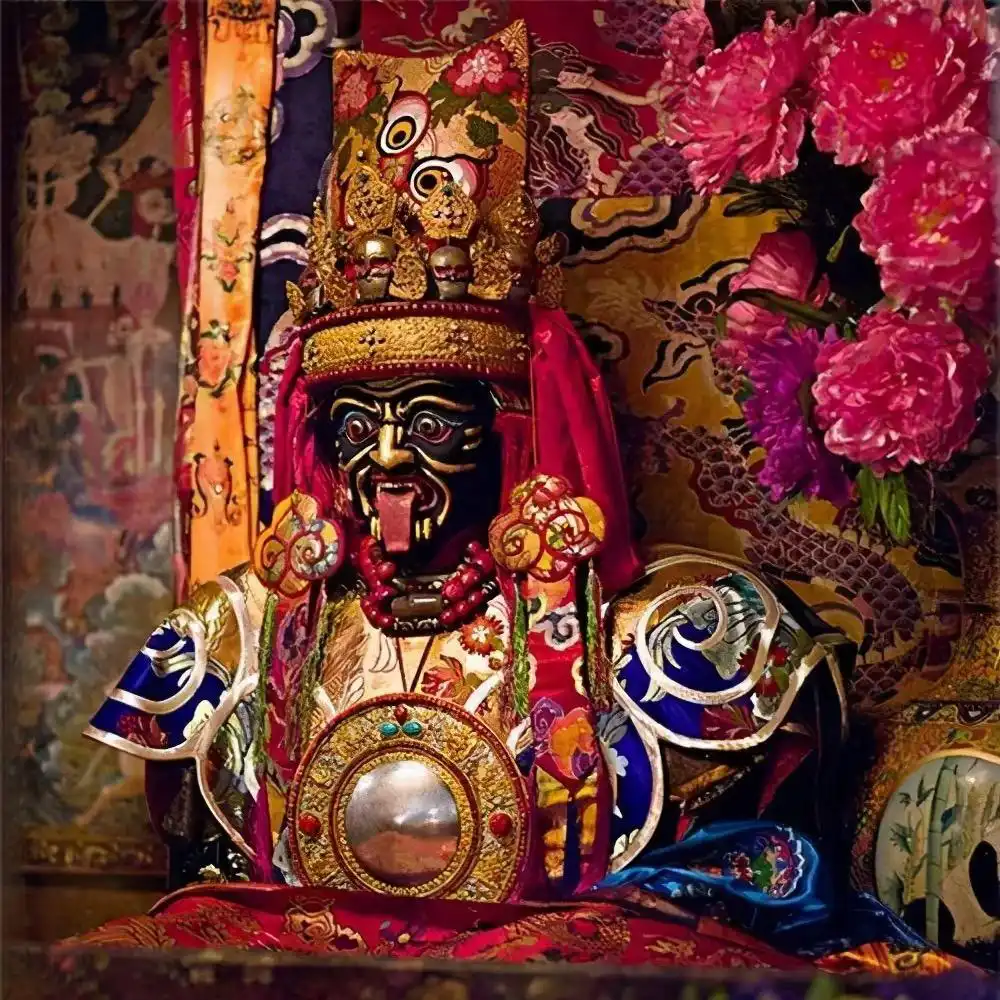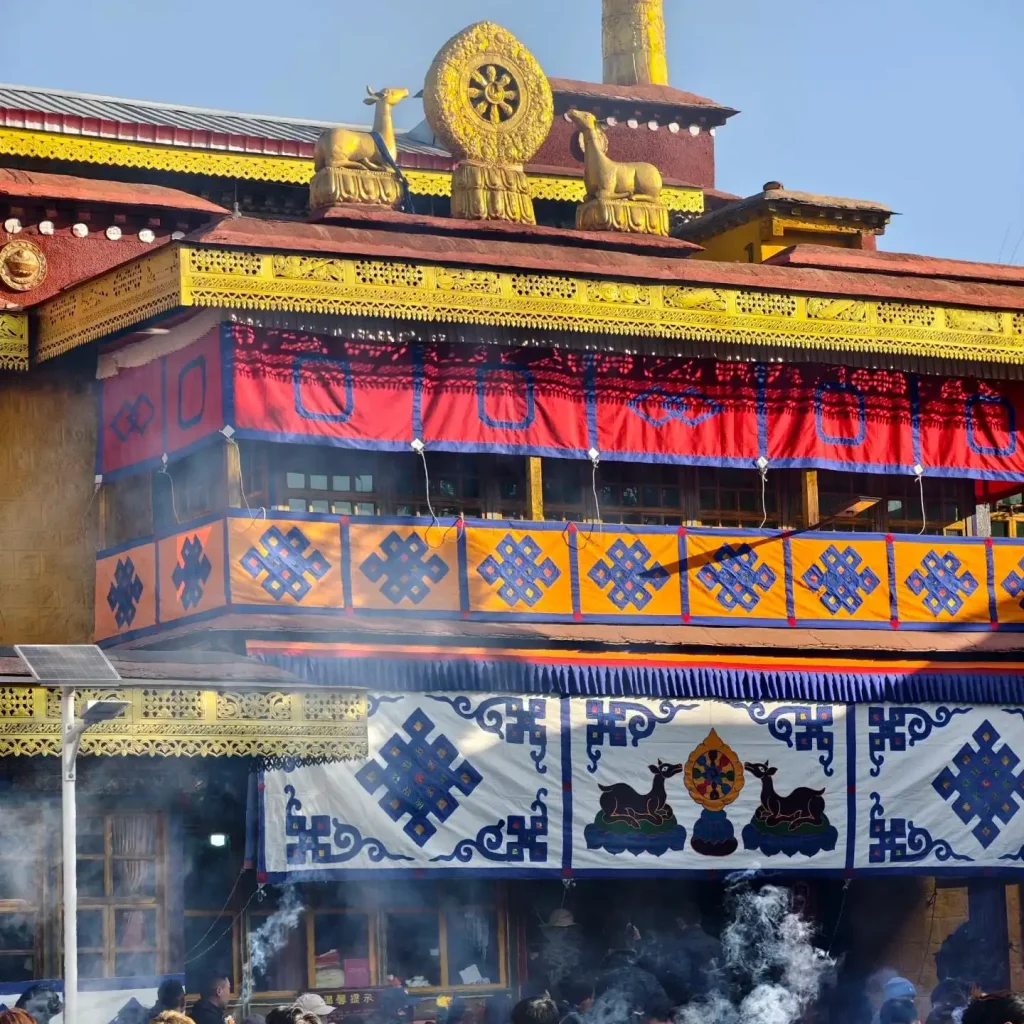
Zhashik Monastery: Where Legend, Wealth, and Devotion Converge

Introduction to Zhashik Monastery
Tucked away in the northern suburbs of Lhasa, Zhashik Monastery (扎基寺) is a vibrant anomaly in Tibet’s spiritual landscape. Far removed from the meditative silence of remote hermitages, this bustling shrine pulses with the hopes of devotees seeking fortune, success, and protection. Centered around the enigmatic deity Zhashik Lhamo (扎基拉姆), the monastery weaves together folklore, cross-cultural history, and the universal human yearning for prosperity. This article explores the monastery’s essence, its historical roots, and the captivating legends that have made it a cornerstone of Tibetan folk faith.
The monastery’s architecture is modest yet evocative: whitewashed walls, golden rooftop ornaments, and prayer flags fluttering above a courtyard often crowded with pilgrims. At its heart lies a small chapel housing the statue of Zhashik Lhamo, adorned with silks, jewelry, and stacks of currency left by devotees. Wednesdays draw the largest crowds, as locals believe this is the day the goddess is most receptive to petitions.
Zhashik Lhamo: The Fierce Guardian of Wealth and Fortune in Tibetan Folklore
Zhashik Lhamo (扎基拉姆), known as Tibet’s “Goddess of Wealth and Luck,” is a deity whose mystique lies in her duality: a fearsome protector with a compassionate heart, a reformed spirit turned bestower of prosperity, and a bridge between earthly desires and spiritual redemption. Her legends, rituals, and symbolism offer a captivating lens into Tibetan Buddhism’s pragmatic embrace of human aspirations. Below, we explore her myths, deeper meanings, and enduring role as a beacon of wealth and good fortune.
By the 19th century, as trade thrived along the Tibet-China routes, Zhashik Lhamo evolved into a patron of merchants and entrepreneurs. Han Chinese settlers in Lhasa popularized her worship, claiming she bestowed luck in business ventures. Her reputation as a wealth deity grew, attracting not just traders but also students, artists, and even gamblers. Today, her shrine at Zhashik Monastery in Lhasa overflows with offerings of cash, jewelry, and liquor—a testament to her enduring role as a divine broker of prosperity.


Symbolism and Deeper Meanings
Zhashik Lhamo’s iconography and rituals are layered with philosophical and cultural significance:
1. The Ferocity of Protection
Her terrifying appearance—bulging eyes, fanged mouth, third eye, and a crown of skulls—serves a dual purpose. To the uninitiated, she embodies chaos and unchecked desire. To devotees, however, her wrath is a shield against misfortune. She represents the Buddhist idea that compassion can take fierce forms, destroying obstacles (greed, ignorance, envy) to clear the path for growth.
2. Wealth as a Spiritual Tool
While Buddhism often emphasizes detachment, Zhashik Lhamo’s veneration acknowledges the human need for material stability. Her link to wealth is not a celebration of greed but a recognition that resources can fuel generosity and spiritual practice. Offerings of money and liquor symbolize the transmutation of desire: by ritually surrendering worldly attachments, devotees seek to harness abundance mindfully.
3. The Ritual of Baijiu
The practice of offering baijiu (a strong Chinese liquor) is unique in Tibetan Buddhism. Legend claims the princess-turned-goddess retained a fondness for the drink from her Han roots. Pouring liquor into her cup symbolizes both honoring her past and “feeding” her fiery energy, which devotees believe she redirects into granting favors. It also reflects a key Buddhist lesson: even base substances can become sacred through intention.
The Alchemy of Hope
Zhashik Lhamo’s enduring appeal lies in her refusal to fit stereotypes. She is a reformed demoness and a sorrowful princess, a fearsome guardian and a generous benefactor. Her legends teach that wealth is not antithetical to spirituality—it is a tool to be wielded with wisdom. For her devotees, she represents hope: that darkness can be redeemed, that cross-cultural divides can be bridged, and that even in a world of desire, one can find grace.
 FateKarma
FateKarma






